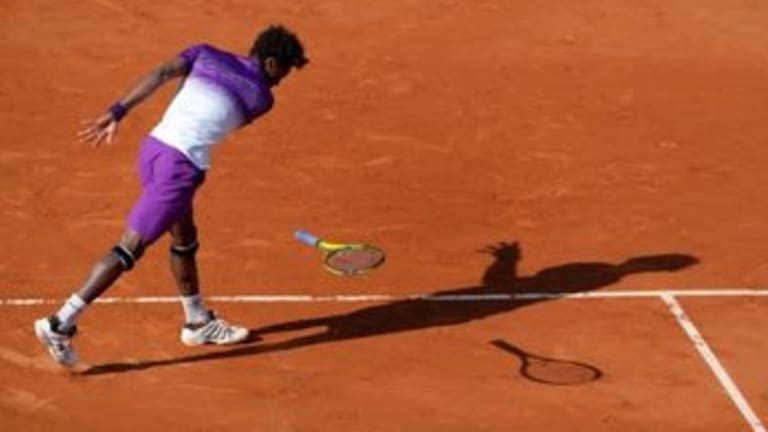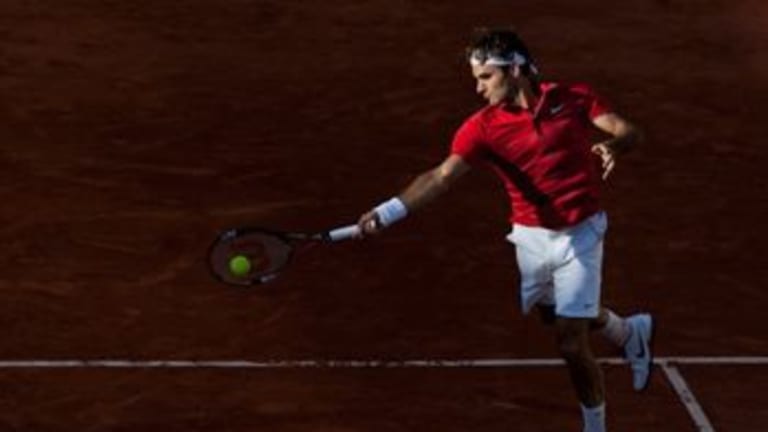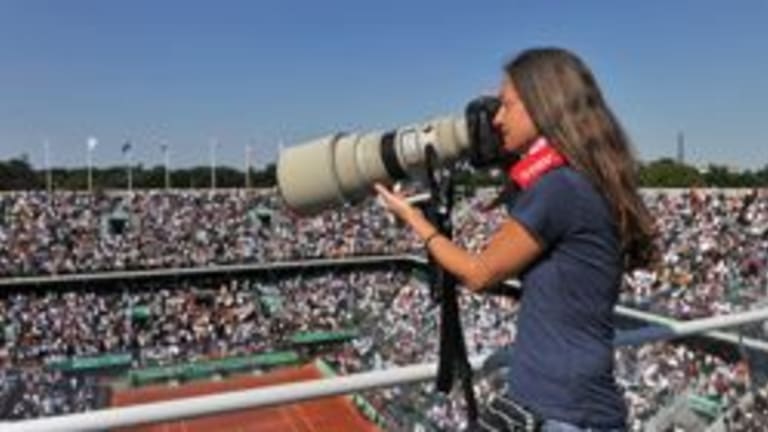PARIS—“We’ll see what Roger gives us,” Manuela Davies says. The 42-year-old German-turned-Floridian trains her big, light-gray Canon on Roger Federer as he gets set to serve. Federer has reached the second-most-important moment of a match for a professional tennis photographer like Davies: set point. He’s trying to close one out against Gael Monfils in their quarterfinal on Court Philippe Chatrier.
Davies and I are above the court, in the press section that’s primarily reserved for reporters. Photographers are allowed there, “as long as they don’t disturb the journalists,” Davies says. It’s not an ideal set-up. The writers sit in front of the photographers, which means they also stand up in front of them, often at crucial moments like set points. Which means they’ve been known to ruin a potentially classic shot or two. “You take your chances up here,” Davies says. It’s worth the risk to her and other photographers because this angle allows them to take shots with no background distractions. “You don’t see any ball kids,” Davies says, “or logos or umpires in the background. You just see the clay.”
The stadium goes silent as Federer tosses the ball to serve. The other photographers in the area, who have been clicking casually and a little haphazardly for the last 10 minutes, train their lenses on Federer. They all want the reaction shot, they all want Federer roaring in full fist-pump. Davies, for one, isn’t optimistic.
“When they’re playing a French player here,” she says, “they usually don't celebrate too much."
She’s right. Federer watches a Monfils ground stroke float wide and slides toward it. He cups the ball on his strings, then turns and shakes his fist three times while looking up to his box. You realize how much luck goes into any photograph. It appeared at first that Federer would react while facing away from Davies’ camera, toward the other side of the court. But he waited until after he had turned, right in the direction of Davies and the other photographers near her. Still, while Davies got the shot, Federer’s reaction was too subdued. “That one's dumpable,” she says as she previews the shot. It won’t make the cut.
(Aside: This reminds me of Sports Illustrated photographer Neil Leifer’s story about getting his most famous shot, that of Muhammad Ali growling over a prone Sonny Liston in 1965. In between Ali’s legs, you can see the face of SI’s other photographer staring across at Leifer. He doesn’t have a shot; he was, by blind luck, on the wrong side of the ring.)
Davies is at the French Open on Tennis magazine’s photographer's credential, as she has been for the last few years. With that, she gets access to the grounds for the two weeks, and, just as important, a reserved space in the photographer’s pit at courtside for the finals. Davies and her husband, Jeff, who is also a photographer, began shooting tennis at a small tournament in Orlando in 2000. She had loved photography since she was 10, but hadn't pursued it as a career when she was young. "My parents didn't think it was a real job," she says.


